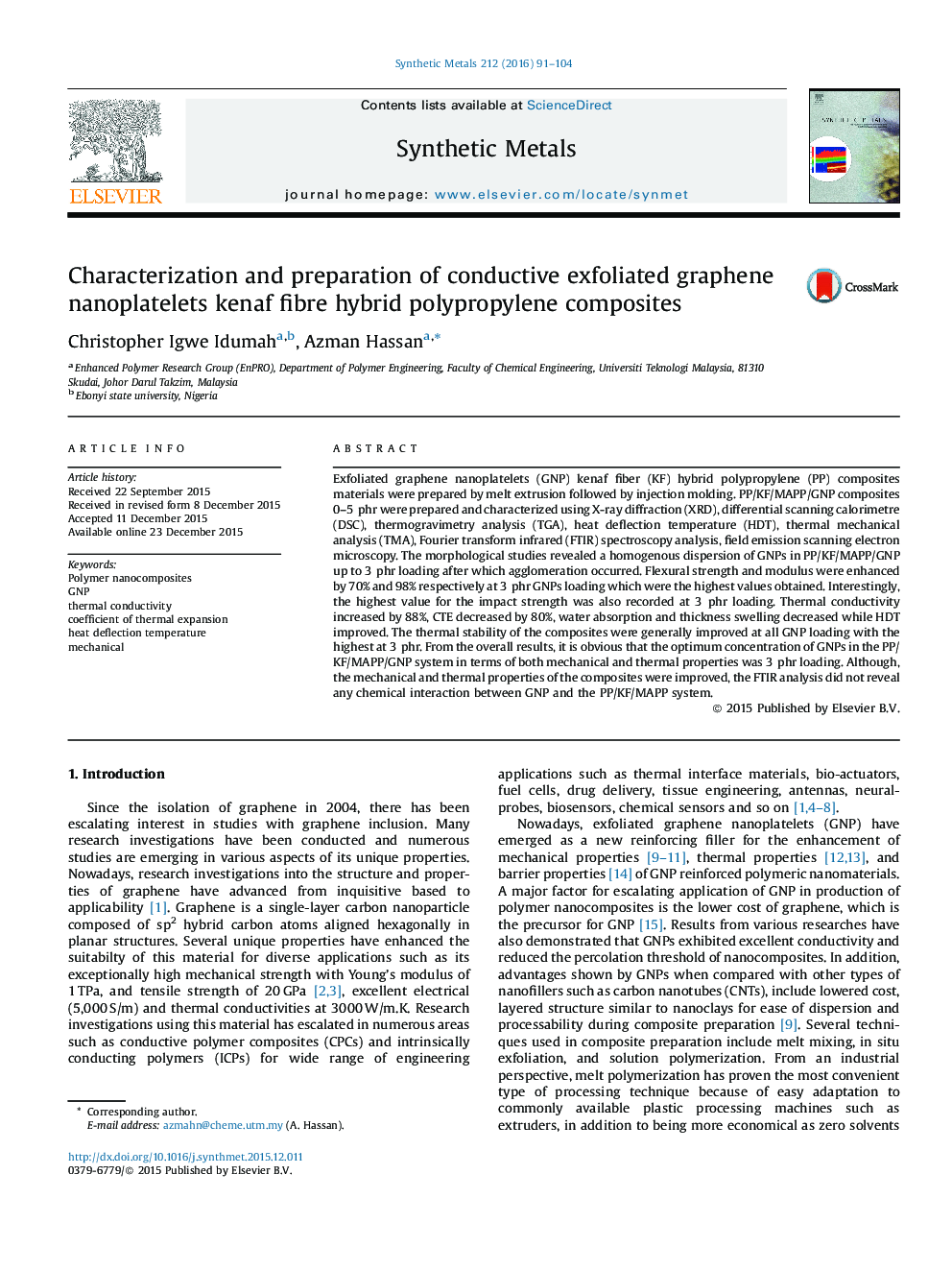| کد مقاله | کد نشریه | سال انتشار | مقاله انگلیسی | نسخه تمام متن |
|---|---|---|---|---|
| 1440293 | 1509365 | 2016 | 14 صفحه PDF | دانلود رایگان |
• The effects of the synergy between hybrid GNP/kenaf systems on material properties of PP/KF/MAPP/GNP nanocomposites were studied.
• PP/KF/MAPP/GNP hybrid nanocomposites were successfully fabricated via eco-benign melt processing technique using co-rotating twin screw extruder
• Morphological and structural studies using FESEM AND TEM show uniform distribution of GNP in the matrix.
• The CTE reduced with increasing inclusion of nanofillers while HDT increased with inclusion of GNP, and thermal resistance decreased with increasing inclusion of GNP.
• Thermal conductivity monotonically increased with increasing inclusion of nanoparticles with overall improvement in mechanical properties.
• The propensity of materials to water absorption and dimensional instability were greatly reduced with increasing inclusion of GNP. Overall, parameters influencing effective improvement of properties are uniform and homogeneous distribution of GNP layered nanoplatelets in the hybrid kenaf-polymer system.
Exfoliated graphene nanoplatelets (GNP) kenaf fiber (KF) hybrid polypropylene (PP) composites materials were prepared by melt extrusion followed by injection molding. PP/KF/MAPP/GNP composites 0–5 phr were prepared and characterized using X-ray diffraction (XRD), differential scanning calorimetre (DSC), thermogravimetry analysis (TGA), heat deflection temperature (HDT), thermal mechanical analysis (TMA), Fourier transform infrared (FTIR) spectroscopy analysis, field emission scanning electron microscopy. The morphological studies revealed a homogenous dispersion of GNPs in PP/KF/MAPP/GNP up to 3 phr loading after which agglomeration occurred. Flexural strength and modulus were enhanced by 70% and 98% respectively at 3 phr GNPs loading which were the highest values obtained. Interestingly, the highest value for the impact strength was also recorded at 3 phr loading. Thermal conductivity increased by 88%, CTE decreased by 80%, water absorption and thickness swelling decreased while HDT improved. The thermal stability of the composites were generally improved at all GNP loading with the highest at 3 phr. From the overall results, it is obvious that the optimum concentration of GNPs in the PP/KF/MAPP/GNP system in terms of both mechanical and thermal properties was 3 phr loading. Although, the mechanical and thermal properties of the composites were improved, the FTIR analysis did not reveal any chemical interaction between GNP and the PP/KF/MAPP system.
Figure optionsDownload as PowerPoint slide
Journal: Synthetic Metals - Volume 212, February 2016, Pages 91–104
